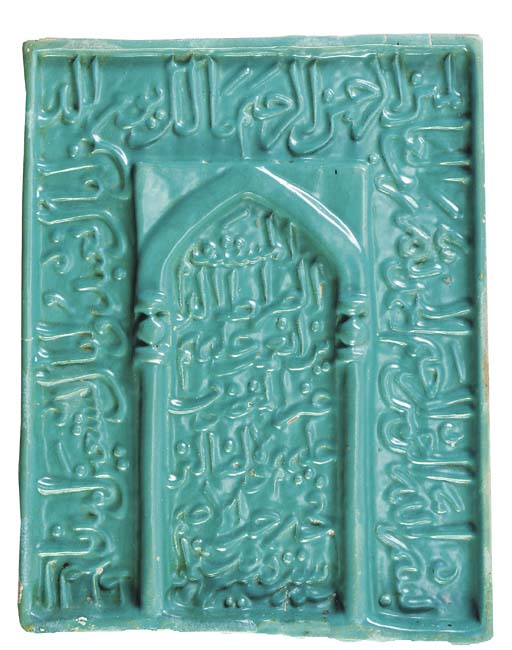

A pottery mihrab, Iran, 1229; a predecessor of the Met's famous one
Source: http://www.christies.com/LotFinder/search/LOTDETAIL.ASP?sid=&intObjectID=4272503&SE=CMWCAT03+677113+%2D723218250+&QR=M+1+0+Aqc0000900+644634++Aqc0000900+&entry=india&SU=1&RQ=True&AN=1
(downloaded Apr. 2004)
"A KASHAN MOULDED TURQUOISE GLAZED POTTERY MIHRAB, CENTRAL IRAN, DATED RAJAB AH 626/MAY-JUNE 1229 AD. Moulded under the glaze with a bold naskh inscription around the three upper sides flanking a raised arched panel containing seven lines of slightly smaller naskh, occasional retouching of glaze chips, otherwise intact, mounted on board. 16¼ x 12 5/8in. (41 x 32cm.
Lot Notes: The inscription is from the Qu'ran, sura al-fatiha (i) and dated rajab 666/March-April, 1268.
A larger opaque turquoise glazed mihrab is in the Metropolitan Museum of Art
(Carboni, Stefano and Masuya, Tomoko: Persian Tiles, New York, 1993, no.30,
p.35). Dated 712/1312-13, nearly a century later than the present example, it
demonstrates, as also noted by Venetia Porter (Islamic Tiles, London, 1995,
p.11), how conservative some of the designs remained within Iran over long periods
of time."